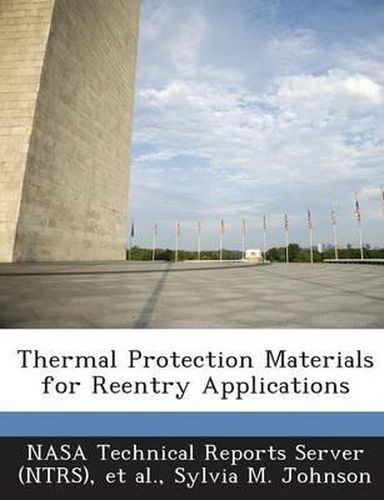Readings Newsletter
Become a Readings Member to make your shopping experience even easier.
Sign in or sign up for free!
You’re not far away from qualifying for FREE standard shipping within Australia
You’ve qualified for FREE standard shipping within Australia
The cart is loading…






Thermal protection materials and systems (IRS) are used to protect spacecraft during reentry into Earth’s atmosphere or entry into planetary atmospheres. As such, these materials are subject to severe environments with high heat fluxes and rapid heating. Catalytic effects can increase the temperatures substantially. These materials are also subject to impact damage from micrometeorites or other debris during ascent, orbit, and descent, and thus must be able to withstand damage and to function following damage. Thermal protection materials and coatings used in reusable launch vehicles will be reviewed, including the needs and directions for new materials to enable new missions that require faster turnaround and much greater reusability. The role of ablative materials for use in high heat flux environments, especially for non-reusable applications and upcoming planetary missions, will be discussed. New thermal protection system materials may enable the use of sharp nose caps and leading edges on future reusable space transportation vehicles. Vehicles employing this new technology would have significant increases in maneuverability and out-of-orbit cross range compared to current vehicles, leading to increased mission safety in the event of the need to abort during ascent or from orbit. Ultrahigh temperature ceramics, a family of materials based on HfB2 and ZrB2 with SiC, will be discussed. The development, mechanical and thermal properties, and uses of these materials will be reviewed.
$9.00 standard shipping within Australia
FREE standard shipping within Australia for orders over $100.00
Express & International shipping calculated at checkout
Thermal protection materials and systems (IRS) are used to protect spacecraft during reentry into Earth’s atmosphere or entry into planetary atmospheres. As such, these materials are subject to severe environments with high heat fluxes and rapid heating. Catalytic effects can increase the temperatures substantially. These materials are also subject to impact damage from micrometeorites or other debris during ascent, orbit, and descent, and thus must be able to withstand damage and to function following damage. Thermal protection materials and coatings used in reusable launch vehicles will be reviewed, including the needs and directions for new materials to enable new missions that require faster turnaround and much greater reusability. The role of ablative materials for use in high heat flux environments, especially for non-reusable applications and upcoming planetary missions, will be discussed. New thermal protection system materials may enable the use of sharp nose caps and leading edges on future reusable space transportation vehicles. Vehicles employing this new technology would have significant increases in maneuverability and out-of-orbit cross range compared to current vehicles, leading to increased mission safety in the event of the need to abort during ascent or from orbit. Ultrahigh temperature ceramics, a family of materials based on HfB2 and ZrB2 with SiC, will be discussed. The development, mechanical and thermal properties, and uses of these materials will be reviewed.